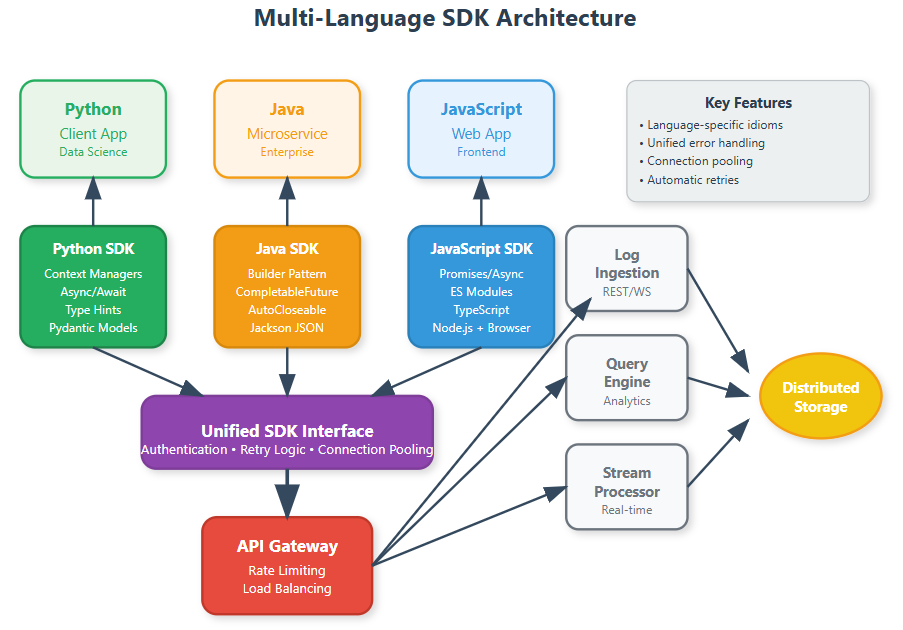Day 88: Multi-Language SDK Libraries - Building Developer-Friendly Access Layer
Week 13: API and Service Layer | Module 4: Building a Complete Distributed Log Platform
What We're Building Today
Core Deliverables:
Python SDK with async/await and context managers
Java SDK with builder patterns and CompletableFuture
JavaScript SDK with Node.js and browser compatibility
Unified error handling and retry logic across all languages
Real-time WebSocket streaming capabilities
Production-ready API server for testing
Comprehensive test suites and examples
Learning Outcomes:
Master SDK design principles used by Netflix, GitHub, and Stripe
Implement language-specific idioms while maintaining consistency
Build connection pooling and automatic retry mechanisms
Create developer-friendly APIs that abstract complexity
Core Concepts: The SDK Design Philosophy
Why SDKs Matter in Distributed Systems
SDKs transform complex API interactions into simple, idiomatic method calls. Instead of developers manually crafting HTTP requests, handling authentication, and managing retries, your SDK handles these concerns automatically. Netflix's SDK libraries abstract away the complexity of their microservices, letting developers focus on business logic rather than infrastructure concerns.
The key insight: Great SDKs feel like native language extensions, not foreign API wrappers.
SDK Design Principles
Language Idiomatic Patterns: Each SDK follows its language's conventions - Python uses context managers, Java leverages builders, JavaScript embraces promises and async/await.
Unified Behavior: Despite language differences, all SDKs provide identical functionality with consistent error handling and retry behavior.
Progressive Disclosure: Simple operations work with minimal configuration, while advanced features remain accessible through optional parameters.
Context in Distributed Log Processing System
Your SDK libraries sit between client applications and your API layer, providing the critical developer experience that determines platform adoption. They integrate seamlessly with the rate limiting and quota management from Day 87, automatically handling backpressure and throttling responses.



